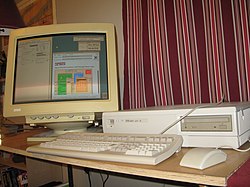This article has multiple issues. Please help improve it or discuss these issues on the talk page . (Learn how and when to remove these messages)
|
| Motif Window Manager | |
|---|---|
 | |
| Developer(s) | Open Software Foundation, The Open Group |
| Stable release | |
| Operating system | Unix-like, OpenVMS [2] |
| Type | Window manager |
| License | 2012: LGPL-2.1-or-later [a] 1990s: Proprietary |
| Website | motif |
In computing, the Motif Window Manager (MWM) is an X window manager based on the Motif toolkit.
